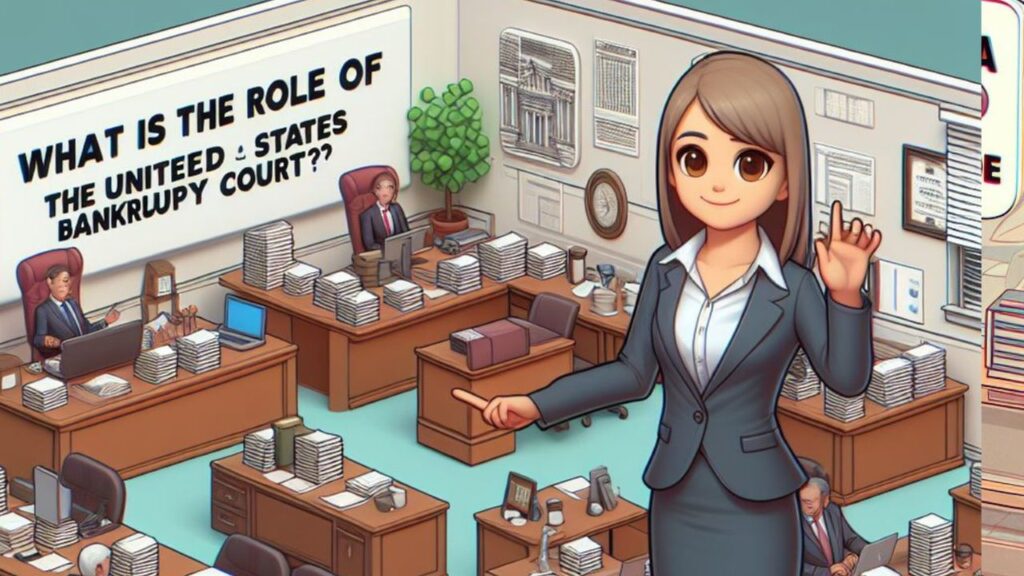
Car Accident Attorney Lawyer | 171
Confronting a heap of obligation can feel overpowering, leaving you contemplating whether there’s an exit plan. Luckily, the US Liquidation Court framework exists to give people and organizations a way to monetary help.
Be that as it may, what precisely does this court do, and what might it do for you? This thorough aide dives into the job of the US Chapter 11 Court, illustrating its capability, the cycles in question, and the potential advantages it offers.
Grasping Insolvency: A New beginning or Methodical Reimbursement
Under the steady gaze of jumping into the court framework, we should lay out an unmistakable comprehension of insolvency itself.
Chapter 11 is a legitimate cycle represented by government regulation that permits borrowers (people or organizations owing cash) to look for help from overpowering obligation. There are two essential objectives of liquidation:
- Obligation Liquidation: This includes selling resources (barring excluded ones) to reimburse leasers however much as could be expected.
- Obligation Reorganization: This takes into consideration the making of a reimbursement plan to repay loan bosses over a set period step by step.

The kind of chapter 11 you document for decides the particular interaction and result.
The Job of the US Insolvency Court
The US Insolvency Court is a particular court inside the government court framework that handles all liquidation cases. There are 94 liquidation courts the nation over, each working under similar arrangement of government chapter 11 regulations illustrated in Title 11 of the US Code. These courts assume a significant part in working with a fair and efficient liquidation process for the two debt holders and lenders.
Here is a breakdown of the vital elements of the US Liquidation Court:
- Case Filings and Administration: The court regulates the documenting of liquidation petitions, guaranteeing they meet every lawful necessity. It likewise names an insolvency legal administrator, a nonpartisan outsider answerable for dealing with the indebted person’s resources and regulating the case’s advancement.
- Hearings and Adjudications: The court conducts hearings on different issues connected with the insolvency case, including qualification to document, arguments about resource valuation, and lender issues with the proposed reimbursement plan. Chapter 11 appointed authorities manage these hearings and go with basic choices in view of the law and proof introduced.
- Obligation Discharge: This is a court request that lets the debt holder out of their legitimate commitment to reimburse specific obligations. The court decides if a borrower meets all requirements for a release in light of the sort of liquidation documented and different elements.
- Affirmation of Reimbursement Plans: In Section 13 chapter 11 (obligation redesign), the court audits and affirms the proposed reimbursement plan, guaranteeing it’s fair and doable for both the borrower and leasers.
- Oversight of Resource Sales: In the event that liquidation is important, the court directs the offer of the borrower’s non-excluded resources in a fair and straightforward way. The returns from these deals are utilized to pay lenders as indicated by the liquidation code’s need conspire.
- Excusal of Cases: The court has the position to excuse an insolvency case in the event that it’s considered paltry or on the other hand on the off chance that the debt holder neglects to consent to court orders.
The Insolvency Cycle: A Bit by bit Look
Understanding the general progression of an insolvency case can assist you with exploring the interaction all the more really. Here is an improved on breakdown of the normal advances included:
- Credit Counseling: Prior to seeking financial protection, it’s required to finish a credit guiding course from an administration endorsed organization. This course assists people with investigating elective answers for deal with their obligation.
- Means Test: This is a monetary evaluation used to decide if a borrower fits the bill for Part 7 insolvency (liquidation) in light of their pay and costs.
- Petition Filing: The borrower records a request with the liquidation court in their region, framing what is going on, including resources, obligations, and pay.
- Automatic Stay: After recording, a programmed stay comes full circle, stopping most assortment endeavors from banks. This furnishes the borrower with transitory monetary space to breathe.
- Meeting of Creditors: The court gathers a gathering between the borrower, the legal administrator, and leasers. This fills in as a chance for leasers to pose inquiries about the debt holder’s funds and resources.
- Plan Improvement (Section 13): In Part 13 cases, the borrower, with direction from a lawyer or credit guide, fosters a reimbursement intend to repay lenders more than a long term period.
- Plan Affirmation Hearing: The court holds a conference to survey and affirm the proposed reimbursement plan, guaranteeing it meets legitimate necessities and is reasonable to all gatherings included.
- Asset Liquidation (Section 7): Assuming Part 7 is recorded, the legal administrator assembles and offers non-excluded resources for pay loan bosses as indicated by the need conspire.
- Debt Discharge: In the wake of finishing the court-supported reimbursement plan (Part 13) or the liquidation cycle (Section 7), the debt holder gets a release request, letting them out of their lawful

Proceeded: The Job of the US Liquidation Court
Advantages of Declaring financial insolvency
While liquidation conveys a social disgrace, it tends to be a significant instrument for people and organizations battling with overpowering obligation. Here are a portion of the key advantages it offers:
- Obligation Relief: Liquidation can give a critical decrease in the red or even total end, considering a new monetary beginning.
- Programmed Stay: This prompt security from leasers’ assortment endeavors gives truly necessary space to breathe to foster a monetary arrangement.
- Obligation Reorganization: Part 13 chapter 11 permits people to make a sensible reimbursement plan, frequently with lower regularly scheduled installments.
- Stop Compensation Garnishments: Declaring financial insolvency can end wage garnishments, where a piece of your check is kept to pay loan bosses.
- Forestall Dispossession or Repossession: Liquidation might assist deferral or even with forestalling abandonment on your home or repossession of your vehicle.
Contemplations Prior to Seeking financial protection
While insolvency offers huge advantages, understanding the likely disadvantages prior to settling on a choice is urgent. Here are a few central issues to consider:
- Influence Using a credit card Score: Petitioning for financial protection will adversely affect your FICO rating for a very long time, making it hard to get credits or Visas with good terms.
- Loss of Assets: In Section 7 liquidation, you might be expected to offer a non-excluded resources for pay leasers.
- Long haul Responsibility (Section 13): Effectively finishing a Part 13 reimbursement plan requires a drawn out monetary responsibility and severe planning.
- Legitimate Charges and Costs: Lawyer expenses and related court expenses can add up, so considering these costs into your decision is significant.

Looking for Proficient Assistance: Insolvency Attorneys
The insolvency cycle can be perplexing, with different lawful subtleties and conventions. Talking with a certified chapter 11 legal counselor is energetically suggested.
This is the way an insolvency legal counselor can help you:
- Qualification Assessment: They can assist with deciding the best sort of liquidation to petition for in view of your particular monetary conditions.
- Record Preparation: They will guarantee your appeal and other required archives are arranged precisely and documented accurately.
- Portrayal in Court: A legal counselor will address you in trials, advocate for your inclinations, and haggle with lenders for your benefit.
- Monetary Guidance: They can offer significant monetary exhortation to assist you with remaking your credit and deal with your funds actually after insolvency.
End: The US Liquidation Court – A Way to Monetary Help
The US Liquidation Court assumes a basic part in giving an organized and fair framework for debt holders and loan bosses exploring monetary difficulty. Understanding its capabilities and the liquidation interaction itself engages people and organizations to settle on informed choices in regards to their monetary future.
Keep in mind, chapter 11 is certainly not an indication of disappointment, yet rather a lawful device that can prompt a new beginning. In the event that you’re battling with obligation, talking with a certified liquidation legal counselor can assist you with deciding whether this way is ideal for you.
